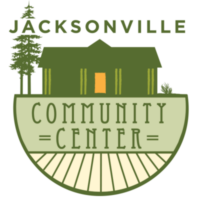
Written by: Ellen Barry, JCC volunteer and PPRV volunteer
When I moved here, I left behind my tiny native plant hillside garden to move into our new home outside Jacksonville on acres of mountaintop featuring clay and shale. It was eerily quiet that fall. Construction had frightened away all life, it seemed. There was no garden, and it seemed an insurmountable task to create one on barren cleared land. The next spring was a revelation. As I walked in the woods, under huge manzanitas covered in small pink bell-shaped blooms, the sound of bees rose to an electric hum. In late spring when the madrone bloomed, my city ears heard the sound of an electrical transformer—but it was the bees again. I knew that my home garden would flourish if I could attract bees and other pollinators.
In Jacksonville, we live amidst orchards and farms which rely on bees for pollination. Humans can’t do it. It’s not just the orchards and farms that need bees: eighty-five percent of all flowering plants, including trees and other native plants, depend upon pollination for their survival. And those hard-working bees (many native bees, as well as honey bees) and other insects provide us with one out of every three bites of food: fruit, berries, squash, herbs, medicine, even coffee and chocolate, to name a few. Pollinators don’t seem to be phased by city life, as long as there are plots and patches of flowers they will be visited by hungry bees. Pollinator gardening near community gardens also increases urban agricultural yields. If you build it, they will come and help you get bigger and better crops too!
But people like me—and you—are part of a problem that we may not even know we have, but can fix! Expanding development is creating a fragmented landscape with too few native plants and natural habitat, increasing the use of pesticides, which can and does increase the spread of invasive plants and species, all compounded by climate change in the long term and extreme weather in the short term. The fires and drought we are experiencing now are proof that we are in the midst of extremes we didn’t anticipate when most of our town’s gardens were planted.
So how can we help when it seems like the problem (like so many these days!) is larger and more complex than we can possibly solve? We can plant native plants, and we can learn about how natives have adapted to our specific soils and weather patterns. We are so lucky that there are multiple resources available to help us learn what to do and how to integrate native pollinators into our home gardens, whether it’s a single plant or an entirely new garden.
A great place to learn more about native plants is at the: Pollinator Project Rogue Valley, 312 N. Main Street, Phoenix: https://www.pollinatorprojectroguevalley.org/
Learn for yourself:
Resources from Pollinator Project Rogue Valley https://www.pollinatorprojectroguevalley.org/protect-pollinators
Native Plant Society Oregon website: https://www.npsoregon.org
Klamath Siskiyou Native Seeds site: https://klamathsiskiyouseeds.com
The Understory Initiative site: https://understoryinitiative.com
Master Gardener information through OSU Extension: https://extension.oregonstate.edu/mg
Visit local native plant gardens:
Britt Woodlands (jvwoodlands.org)
PPRV’s demonstration garden at 312 N. Main St., Phoenix OR
North Mountain Park Nature Center, 620 N. Mountain Avenue, Ashland OR

